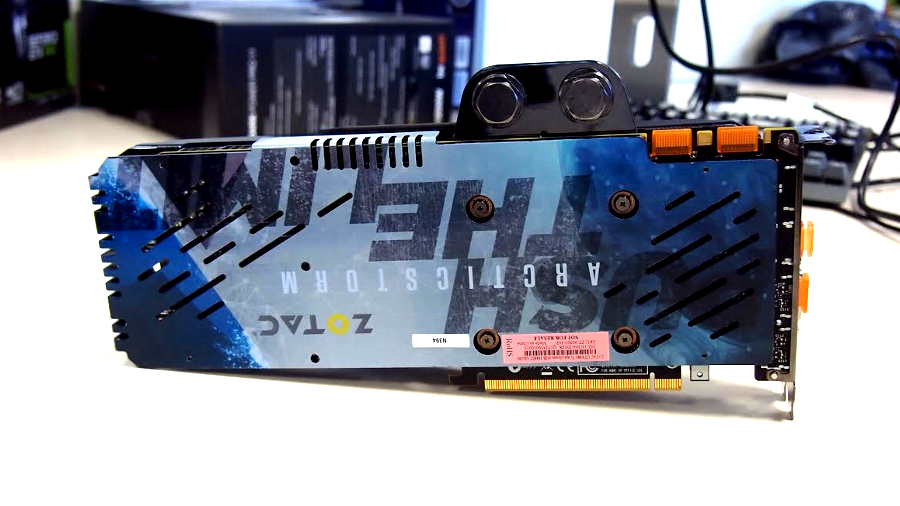TechRadar Verdict
Almost Titan X performance without the Titan X price tag, the GTX 980 Ti is a stunning, if still costly option.
Pros
- +
Insane cooling potential
- +
Looks stunning
- +
£110 ($173) less than a Titan X
Cons
- -
Incredibly heavy
- -
Needs a fully-cooled loop
Why you can trust TechRadar
We were all surprised when Nvidia launched its 980 Ti in early June. Although strategically a sound marketing idea, considering the rumoured release of AMD's 300 series lineup, it left us wondering where on Earth this monster child would sit. If you take a gander back to the days of the 700 series, however, what follows will come as little surprise.
Back then, the GK110 Kepler architecture, boasting Titan Black, became a little redundant as a gaming card. For frames per dollar, the 780 Ti ran rings around it, relegating the Titan to the dusty halls of early retirement as a 'developer card'. However, with many calling the 780 Ti nothing more than a response to the threat that was AMD's R9 200 series, we'd mostly believed Nvidia had learnt its lesson. But we were wrong.
To be blunt, the Titan X is nothing short of astonishing. For spec, it's almost unmatched. With 3,072 CUDA cores, 8 billion transistors and 12GB of GDDR5, you'd think it would blow all other cards out of the water. So, with the Titan X coming in at £800 (around US$1,257, or AUS$1,635) and the GTX 980 demanding half that price, where does this titanium edition fit into Nvidia's new GPU lineup?
After all, with half the memory, 200 less CUDA cores and a smidgin fewer ROPs, you'd expect the frame rate in particular would suffer, when compared to its more powerful cousin.
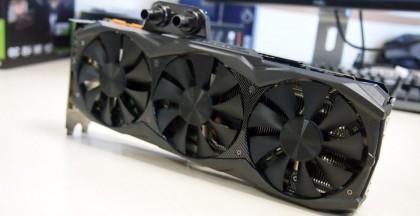
Boss fight
The 980 Ti, however, feels like a precision instrument. A weapon developed from the ground up solely for gaming. Although it's the same thoroughbred architecture that the Titan X was born from, its sole purpose is to cut the chaff and be the warhorse that gamers want. Early benchmarking showed that Nvidia's new beast was, in some scenarios and when overclocked, actually on a par with the Titan X.
Aftermarket board partners often create a wide variety of exciting coolers for these new cards. But it was with astonishment that a name we'd not often heard came to us, with what can only be described as an idea comparable to that developed behind the walls of Mercedes's notorious Skunkworks.
A triple-fan card solution, with an integrated water block for water-cooling enthusiasts, which works independently as well (impressive when you consider that air acts as an insulator between these two coolers). So a hybrid cooler… sort of.
Sign up for breaking news, reviews, opinion, top tech deals, and more.
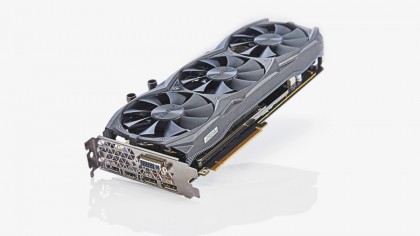
This sounded like one hell of a card and we had to get our hands on one. Recently, we've made it a top priority to overclock all of the hardware we get in, just to see how far we can push it before it becomes too unstable. We then take a step back, check what the community is pushing their overclocks to, and dial it back by 50Hz further, to ensure our readers can achieve the same results, regardless of where they fall in the silicone spectrum.
So what happened? Something incredible. A battle of blows. Bearing in mind that we didn't push Zotac's solution to the absolute limits or place it under water, it still quite comfortably kept pace with an overclocked Titan X. Benchmark after benchmark came in, and we were left in awe – the scores between the two giants were just so close.
Benchmarks
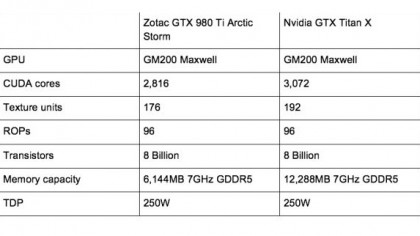
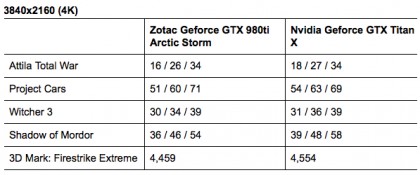
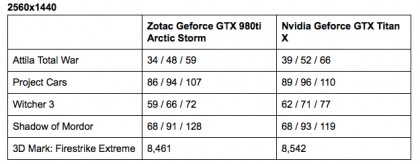
Verdict
Granted, at £690 (around US$1,083 or AUS$1,388) the Arctic Storm is not a cheap card, but we can understand why. The tri-cooler and full-copper waterblock, plus custom backplate (with a fantastic paint job) make this GPU phenomenally heavy, yet help dissipate that excess heat without too much worry for the end user. It's unfortunate that this card is off so soon. We can only imagine what kind of crazy benchmarks we could get from it under water. Forget AMD, forget Fury. This thing is a Titan killer.
PC Format is the magazine for PC gamers and hardware enthusiasts, created by geeks and gamers. Each issue covers the latest advances in graphics cards, processors, motherboards, memory, SSDs and complete systems. We also feature guides on overclocking, tweaking, system building, system modding and PC repair. Click here to subscribe.

Zak is one of TechRadar's multi-faceted freelance tech journalists. He's written for an absolute plethora of tech publications over the years and has worked for Techradar on and off since 2015. Most famously, Zak led Maximum PC as its Editor-in-Chief from 2020 through to the end of 2021, having worked his way up from Staff Writer. Zak currently writes for Maximum PC, TechRadar, PCGamesN, and Trusted Reviews. He also had a stint working as Corsair's Public Relations Specialist in the UK, which has given him a particularly good insight into the inner workings of larger companies in the industry. He left in 2023, coming back to journalism once more. When he's not building PCs, reviewing hardware, or gaming, you can often find Zak working at his local coffee shop as First Barista, or out in the Wye Valley shooting American Flat Bows.
